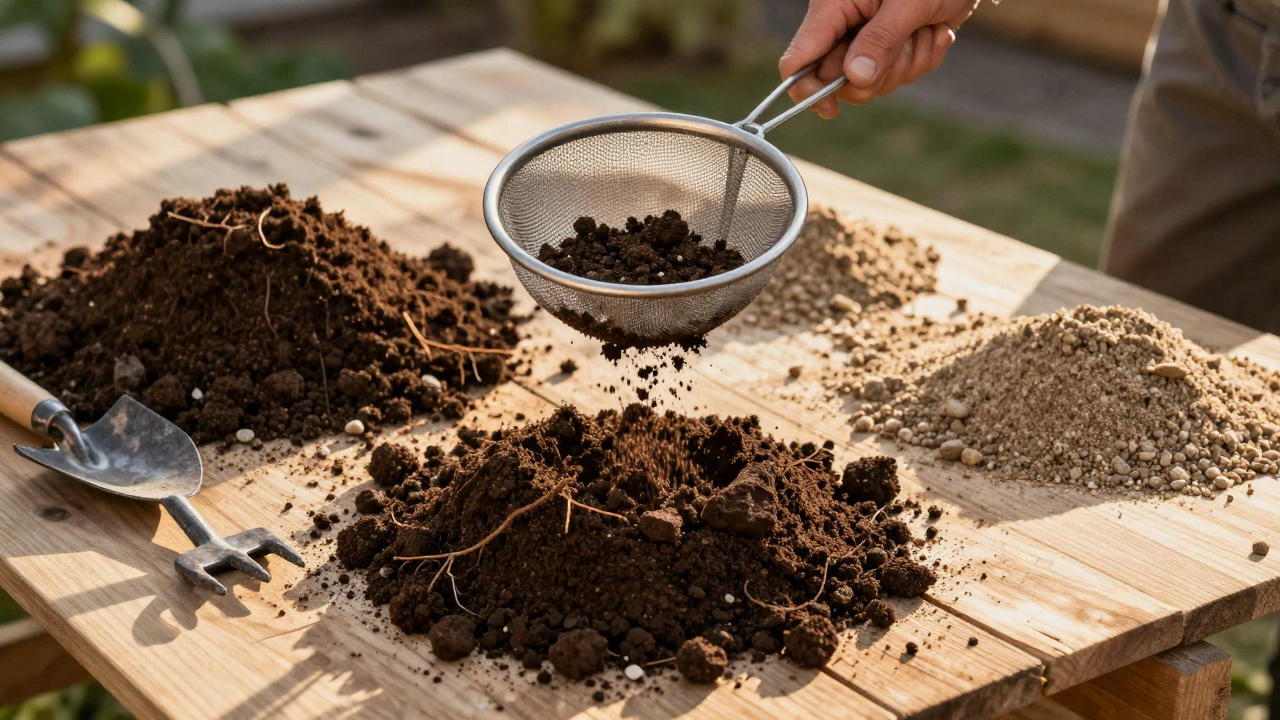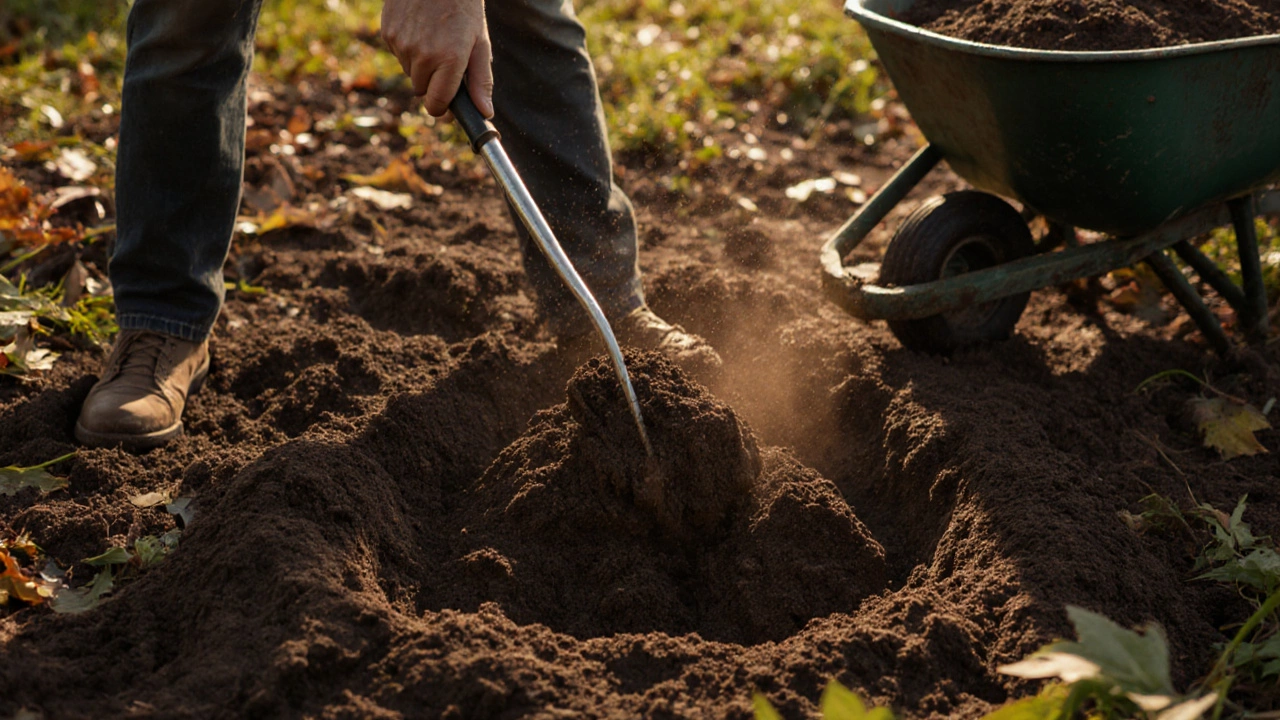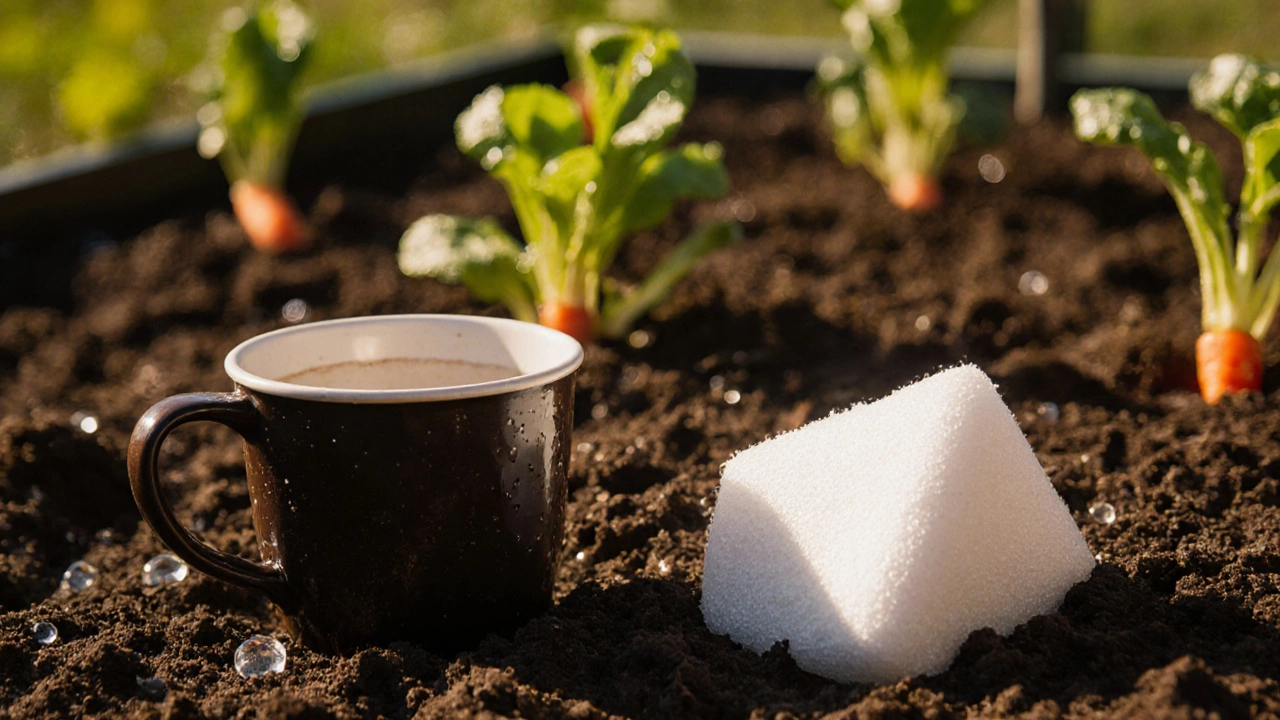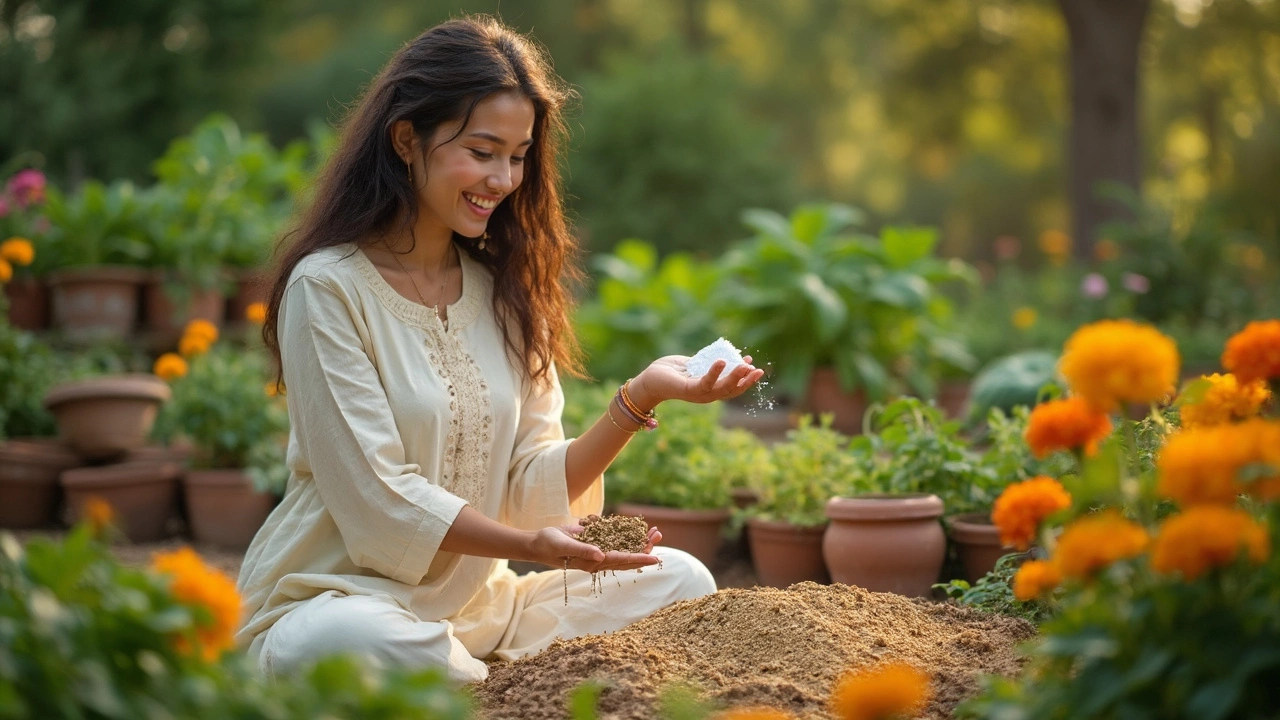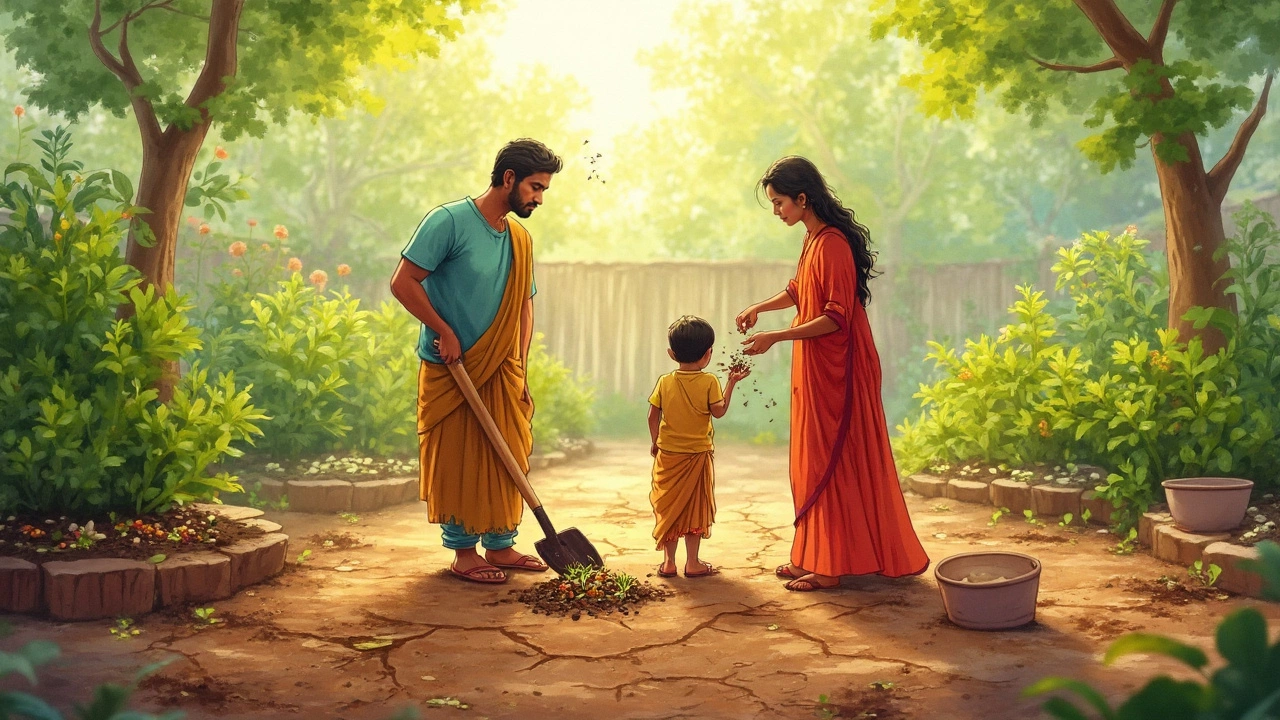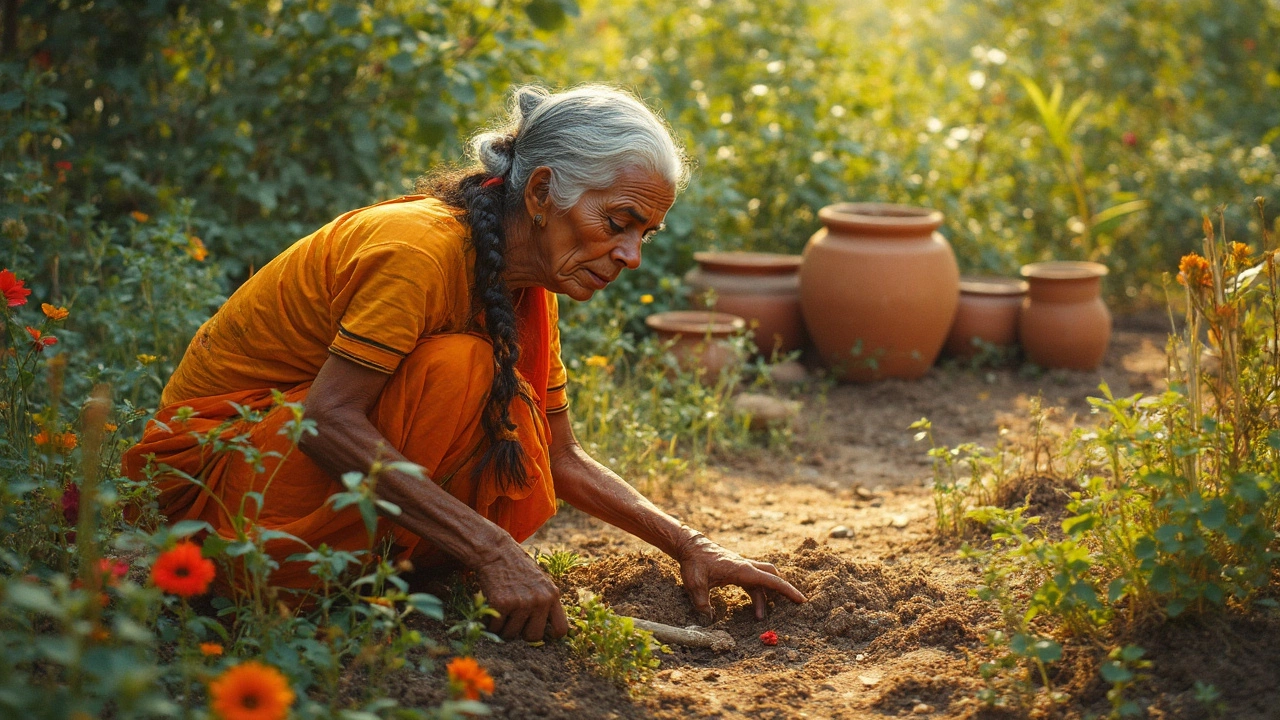Learn how to make your own topsoil using compost, screened soil, and coarse sand. Save money, avoid contaminants, and grow healthier plants with a custom soil blend that outperforms store-bought options.
Garden Soil Improvement: Best Ways to Boost Your Soil for Healthier Plants in India
When you talk about garden soil improvement, the process of enhancing dirt to support stronger plant growth through added nutrients, better structure, and improved water flow. It's not about buying expensive products—it's about working with what you already have. Most Indian gardeners start with soil that’s either too sandy, too clay-heavy, or just plain tired from years of growing without rest. The good news? You don’t need fancy tools or science degrees to fix it. Just a little understanding, some organic matter, and patience.
Composting, turning kitchen scraps and yard waste into dark, crumbly nutrient-rich material is the backbone of real soil improvement. It’s not just fertilizer—it’s food for the tiny life underground that keeps soil alive. When you mix compost into your garden beds, you’re not just adding nitrogen or phosphorus. You’re building structure, helping clay drain better, and letting sandy soil hold onto moisture longer. And it’s free. Think of it like giving your soil a multi-vitamin every season.
Drainage, how easily water moves through the ground is another silent killer of plants. In places like Chennai or Kolkata, heavy rains turn gardens into swamps. In Rajasthan or Gujarat, the opposite happens—water runs right through. Both are problems. Improving drainage doesn’t mean digging trenches every year. Sometimes it’s just adding coarse sand to clay, or raising beds a few inches. Other times, it’s mixing in well-decomposed leaf litter. The goal? Water should sit for a few hours, not days, and never leave roots drowning.
Organic matter, anything that once lived and has broken down—like manure, straw, or even shredded newspaper is the magic glue that holds good soil together. It’s what turns hard, lifeless dirt into something that feels soft, smells earthy, and crumbles in your fingers. You don’t need to buy peat moss or coconut coir. In India, cow dung, rice husk, or even dry leaves from your neighbor’s tree can work wonders. The key? Layer it, mix it in, and let time do the rest.
Soil improvement isn’t a one-time fix. It’s a habit. Just like watering, weeding, or checking for pests, it’s something you do every season. Some gardeners add compost every monsoon. Others mix in aged manure before planting winter crops. The best growers don’t wait until their plants look sick—they tune up the soil before the season starts.
You’ll find posts here that show you exactly how to fix common problems: why your hydrangeas are struggling (hint: it’s not just the sun), how drip systems can ruin soil if drainage is poor, and why the best gardeners in India swear by homemade compost over store-bought fertilizers. You’ll also see which plants thrive in Indian soil when it’s treated right—and which ones just give up because the dirt was never fixed to begin with.
This isn’t about perfection. It’s about progress. One handful of compost at a time, your soil will change. And so will your garden.
Learn what to add to dense garden soil to make it easier to work with and better for plants. Discover compost, perlite, leaf mold, and other proven amendments that actually work in UK gardens.
Explore the safety of styrofoam in vegetable gardens, covering its effects on soil health, risks, benefits, alternatives, and practical guidelines for growers.
Curious if vermiculite or perlite is right for your garden? This article breaks down the real differences and helps you decide what’s best for your plants. We’ll look at how each works in the soil, their pros and cons, and which situations suit them best. Get handy tips and facts straight from real-life gardening experience. Let’s get practical about boosting plant growth.
Struggling with stubborn, lifeless soil in your yard? This guide dives straight into practical fixes for bad garden soil, including ways to spot common problems and solutions that work fast. Learn simple tricks to boost soil health, from quick fixes with kitchen scraps to what not to do when working with clay or sand. Whether your tomatoes look sad or your flowers just don’t bloom, these tips will change the game for your next planting season. Even beginners can turn a patch of poor dirt into a thriving garden with a few easy moves.
Breathing new life into old garden soil is key to having thriving plants and vibrant blooms. It's about more than just digging up the dirt—knowing the right techniques and materials can make all the difference. Explore ways to naturally replenish nutrients, optimize soil pH, and improve drainage. Get tips on effective composting, mulching, and eco-friendly practices. These strategies will turn tired soil into a nourishing haven for your garden.
